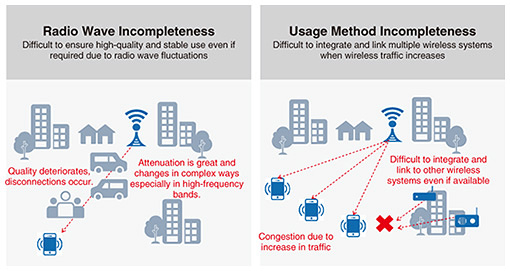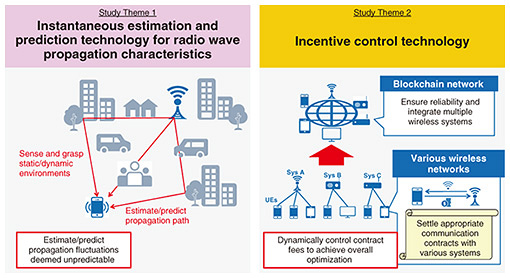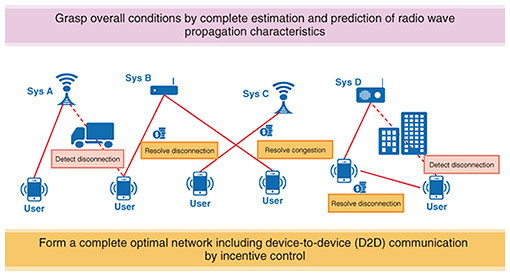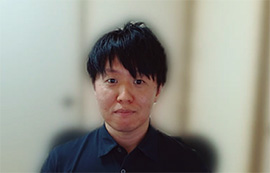 |
|
|
|
|
|
Rising Researchers Vol. 22, No. 4, pp. 13–18, Apr. 2024. https://doi.org/10.53829/ntr202404ri1 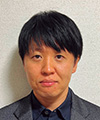 Achieving Complete Wireless Communication through Estimation and Prediction Technology for Radio Wave Propagation CharacteristicsAbstractToday’s network is continuously evolving through a variety of wireless communication systems. Wireless communication is now available just about anywhere—it has become an integral part of everyday life and brought us many benefits. At the same time, wireless communication is predicted to become increasingly complex in the future, so there is a need for further evolution of the wireless network to deal with this complexity. NTT Distinguished Researcher Motoharu Sasaki says, “It is important that the network be easy for people to use without having to think about it.” In this article, we talk with him about his activities as a rising researcher including his research on “achieving complete wireless communication through estimation and prediction technology for radio wave propagation characteristics.” Keywords: wireless communication, radio wave propagation, incentive control Achieving “complete” wireless communication overcoming the problems of a complex wireless network—Dr. Sasaki, what kind of research is “achieving complete wireless communication through estimation and prediction technology for radio wave propagation characteristics?” In “achieving complete wireless communication through estimation and prediction technologies for radio wave propagation characteristics,” I am mainly carrying out two types of research. The first is technology for instantaneously estimating radio wave propagation characteristics and predicting future characteristics using various types of sensing data. The second is incentive control technology that uses the above-mentioned technology in such a way that users and system providers of wireless communication systems unintentionally act in a cooperative manner throughout the entire system. With these two types of technologies, our aim is to achieve “complete” wireless communication that links and integrates a variety of wireless communication systems by advanced means. To give some background to this research, public cellular is now shifting from the fourth-generation mobile communication system (4G) and Long Term Evolution (LTE) to the fifth-generation mobile communication system (5G). Similarly, a wide variety of wireless communication systems are being implemented over a broad range of frequency bands including private cellular and wireless local area networks (LANs) as well as wireless communication systems oriented to the Internet of Things (IoT) such as low power wide area (LPWA). Going forward, we can expect an even further expansion of diverse applications such as IoT and machine-to-machine (M2M) communications, so we believe that wireless communication systems and the way they are used will become all the more complex. Under these conditions, there is a need to process user communication requests that are constantly changing, and to meet this need, it is imperative that such a complex wireless network be properly used. However, the skillful use of a complex wireless network is not easy—there are a variety of problems that must be dealt with such as the inability to ensure high-quality and stable use due to fluctuating radio wave conditions (radio wave incompleteness) and the difficulty of easily using another available wireless system when traffic temporarily increases (usage method incompleteness) (Fig. 1). To overcome these problems in such a complex wireless network, I am researching means of achieving complete wireless communication through estimation and prediction technologies for radio wave propagation characteristics.
—What are you specifically researching? In my research and development (R&D) activities after entering NTT, I worked to grasp and model radio wave propagation characteristics, the foundation for constructing a wireless communication system. This work often involved problems related to wireless communication at NTT operating companies, and the consultation I was asked to give frequently came down to radio wave characteristics with questions like “Radio waves are invisible, so how can I understand how they propagate?” Additionally, I often heard the comment “Even if radio waves are, in fact, propagating correctly, communication quality may still deteriorate due to usage conditions of other wireless communication users.” I took these actual comments from operating companies as an opportunity to begin my current line of research. We can grasp the behavior of invisible radio waves by instantaneously estimating a variety of radio wave conditions and predicting their future state. Specific approaches in this regard use not only static information such as building, computer aided design (CAD), and building information modeling (BIM) data but also various types of sensing data including dynamic data such as images, light detection and ranging (LiDAR), and positioning data. In addition, parameters of various types of fluctuation distributions based on these data can be used to make predictions including the probabilistic behavior of radio waves. In this way, it becomes possible to instantaneously estimate changes in radio wave propagation and predict future characteristics, which has not been possible up to now. With this technology, I believe it will be possible to grasp the radio wave propagation environment surrounding each terminal and base station and optimize wireless communication. I am also undertaking incentive control technology that skillfully sets incentives for operators and users of wireless communication systems so that they unintentionally cooperate with each other throughout the entire system. Here, we use a mechanism for wireless network sharing using blockchain technology so that users and system providers naturally cooperate with each other and a variety of wireless communication systems operate as if they are a single integrated system. My aim here is to achieve a transition from a “world in which radio resources are isolated and users compete for them” to a “mutually cooperative world” (Fig. 2).
—What points have been particularly difficult in your research? In technology for estimating and predicting radio wave propagation characteristics, and particularly in a commercially used network like public cellular, the difficulty is in estimating and predicting those characteristics amid unknowable information. For example, past studies on radio wave propagation characteristics usually assumed that both base-station positions and terminal positions were known, so it was easy to infer the degree to which radio waves would attenuate based on distance. In my research, however, there are also cases in which base-station positions and detailed parameters on the network side must be handled as unknowns. For this reason, my main pursuit is to replace such unknowns with information that can be estimated and predicted through data analysis of various types of peripheral information and parameters that can be grasped from terminals. Next, in incentive control technology, I am researching and developing technologies using blockchain, but jumping into this new area combining wireless communications and blockchain is difficult. Up to now, there has been no precedent in incorporating the blockchain concept in the wireless communication field. There is therefore a need for knowledge in both wireless communication and blockchain to turn this knowledge into services at NTT operating companies. However, a single organization in an operating company that attempts to deal with this need on its own has a large hurdle to overcome. I am also aware that conformity with the current legal system must be considered when talking about a mechanism for sharing wireless LAN access points (APs) using blockchain. —Please tell us your research achievements to date. With respect to estimation and prediction technology for radio wave propagation characteristics, I have established technology for predicting wireless communication quality such as received power about five seconds into the future. I have also used this technology for proof of concept and other demonstrations with an operating company with the aim of stabilizing wireless communication in mobile robots. At present, I am studying means of extending this capability to technology for predicting wireless communication quality such as transmission speed from received power. Regarding incentive control technology, I have performed a verification experiment of technology for sharing wireless LAN APs held by various individuals. This experiment was announced in an NTT press release issued in April 2023. Although there have been previous studies using blockchain mechanisms in the field of communications, there have been almost none on this type of blockchain application. Against this background, this research has been received with amazement and praise from many quarters—there are high expectations for the future implementation of this technology. Looking to the future, I plan to expand my estimation and prediction technology for propagation characteristics, verify its effects through verification experiments conducted with NTT operating companies and others, and promote its implementation as technology for the Innovative Optical and Wireless Network (IOWN) era. Additionally, once incentive control technology is established in FY2024, I would like to apply it to actual services (Fig. 3).
Obsessed with research that produces results and accelerates the coming of IOWN—Please explain the relationship between your research and NTT’s IOWN vision. The use of wireless communication is one important element of delivering ultra-high-speed and ultra-low-latency communication services up to user terminals as declared by the IOWN vision. In the present wireless communication system, each network operator constructs a system and provides services by selecting whatever is necessary for each of the features it can provide such as throughput, communication distance, power consumption, and stable quality. In the IOWN world, the aim is to enable a user to connect naturally to different wireless systems without having to be aware of those differences and to obtain the wireless communication performance needed. This concept is called “extreme Network as a Service (NaaS),” and in my research, I am working on creating those basic technologies. At NTT Access Network Service Systems Laboratories, R&D of a group of control technologies called Cradio® is progressing to achieve extreme NaaS. These technologies will combine multiple wireless communication systems that can be used in a natural way. All of these research efforts will help accelerate the meeting of objectives and will make a contribution as technologies that become the IOWN platform. —What is your impression of NTT laboratories? NTT Access Network Service Systems Laboratories performs widespread R&D supporting access circuits from NTT central offices to customers. In addition to world-leading academic and standardization achievements, it makes many practical contributions in a direct manner such as by solving service-related problems thanks to its strong links with NTT operating companies. In this way, I understand why NTT Access Network Service Systems Laboratories is known for “world-leading R&D of the most advanced field technologies.” In the first year of my master’s course, I came to NTT laboratories on an internship program and spent four weeks in doing desktop studies by simulations and experiment evaluations using prototype equipment. Carrying out these studies in an area different from what I was familiar with at school was difficult, but I learned what it felt like to make steady progress in R&D with a view to practical applications in contrast to what I was doing at school. It was at this time that I resolved to enter NTT. A big difference between NTT laboratories and other companies is that it provides an environment in which you can be involved in infrastructures that anyone can use in contrast to creating individual products like a manufacturer. I am interested in work that can have a major impact on society. Since entering NTT, I have been able to participate in various types of R&D that can actually be applied to a wide range of systems, so I think my feelings during my internship were not wrong at all. In addition to NTT Access Network Service Systems Laboratories, there are other laboratories at NTT involved in a variety of R&D areas. These laboratories gather together talented people having diverse areas of specialties, which I think is undoubtedly the greatest strength of NTT laboratories. In fact, there are times when I make progress in blockchain-related research based on advice from individuals at other laboratories, for which I am extremely grateful.
—Dr. Sasaki, could you leave us with a message for researchers, students, and business partners? In my daily research life, I place great importance on producing results. R&D is often an endeavor covering a long period of time, and even if you are somewhat behind in your daily research, that should not have a great impact on your overall schedule. However, if such delays accumulate, it may be too late to recover from the overall delay once you notice what’s happening. For this reason, I think it is vitally important to undertake your work while thinking “how can I quickly move forward in my research and produce results in a timely manner?” Additionally, while it is certainly important to proceed logically in your daily R&D efforts, I think that, in the end, working with enthusiasm and discipline will lead to results that make a difference. Today’s wireless communication field is evolving rapidly from a technical perspective, and it seems that catching up is difficult even if adopting just a single wireless communication system and its standards. On top of that, a variety of wireless communication systems are constantly appearing and becoming increasingly complex. In this way, while wireless communication has come to be used throughout daily life providing much convenience, I think its full potential has yet to be tapped. Current networks are constructed in a way that people must think about how they can be used and adapt accordingly. On the other hand, I think that making it so that “people can use the network with ease without having to think about it” is essential to drawing out the full potential of wireless communication. This is what I keep in mind in my daily research activities. The ultimate goal of my research is a “world in which all wireless communication systems behave like a single network that can be used without having to think about it.” To achieve such a world, there is still a need for multifaceted R&D and trial-and-error experiments up to practical implementation. My wish is to carve out this new world while becoming colleagues with many people and collaborating with individuals from a wide range of backgrounds. ■Interviewee profileMotoharu Sasaki received his M.E. degree from Kyushu University in 2009 and entered NTT in the same year. He is a member of NTT Access Network Service Systems Laboratories. He received his Ph.D. degree from Kyushu University in 2015 and has been a Distinguished Researcher at NTT Access Network Service Systems Laboratories since 2022. He is engaged in the research and development of instantaneous estimation technology and future characteristics prediction technology for radio wave propagation characteristics. He received the Best Paper Award from the Institute of Electronics, Information and Communication Engineers (IEICE) in 2013, the Young Engineer Award from the Institute of Electrical and Electronics Engineers (IEEE) Antennas and Propagation Society Japan in 2016, and the Encouragement Award from the ITU Association of Japan in 2019. |
|









